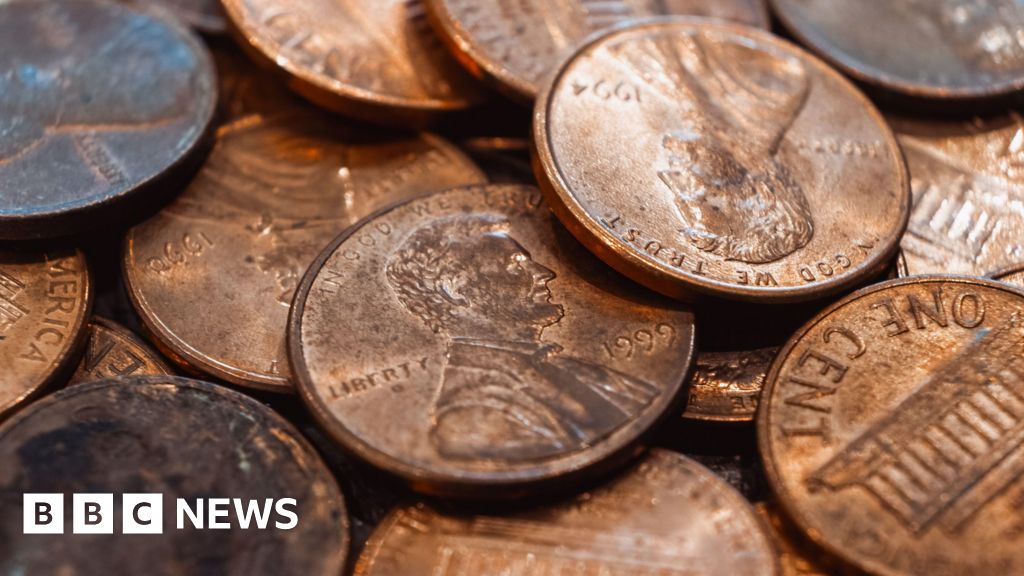
One cent coins will stop being produced in the US next year, the Treasury Department has confirmed.
It marks the phasing out of the coins, commonly known as pennies, which have been in circulation for more than two centuries.
President Donald Trump told Treasury Secretary Scott Bessent in February to stop minting the coins, calling them “wasteful”.
There has been a long debate over the cost and usefulness of pennies in the US.
In January, Elon Musk’s unofficial Department of Government Efficiency (Doge) drew attention to the cost of minting pennies in a post on X.
The penny was one of the first coins made by the US Mint, entering circulation in 1793.
But over the past 10 years, the cost of producing it has risen from 1.3 cents to 3.69 cents per coin, according to the Treasury.
The Mint estimates that stopping production will result in an immediate annual saving of $56m (£42m) in reduced material costs.
Critics of the zinc and copper coin say producing it is a waste of money and resources, while those who want to keep it argue it keeps prices lower and boosts fund-raising for charities.
The phasing out of the coins will mean businesses will need to round prices up or down, according to the Wall Street Journal (WSJ), who first reported the story.
“Confirming the WSJ story, the Treasury has made its final order of penny blanks this month and the United States Mint will continue to manufacture pennies while an inventory of penny blanks exists,” a Treasury spokesperson said.
Other countries have discontinued similar coins. Canada ditched its one cent coin in 2012, citing the cost of minting it and its falling purchasing power due to higher prices.
The declining use of cash meant the UK did not mint any new coins in 2024, after officials decided there were already enough coins in circulation.
The UK Treasury has said that 1p or 2p coins are not being scrapped, but with more people living cashless lives, there have been several years when no 2p coins were produced.







